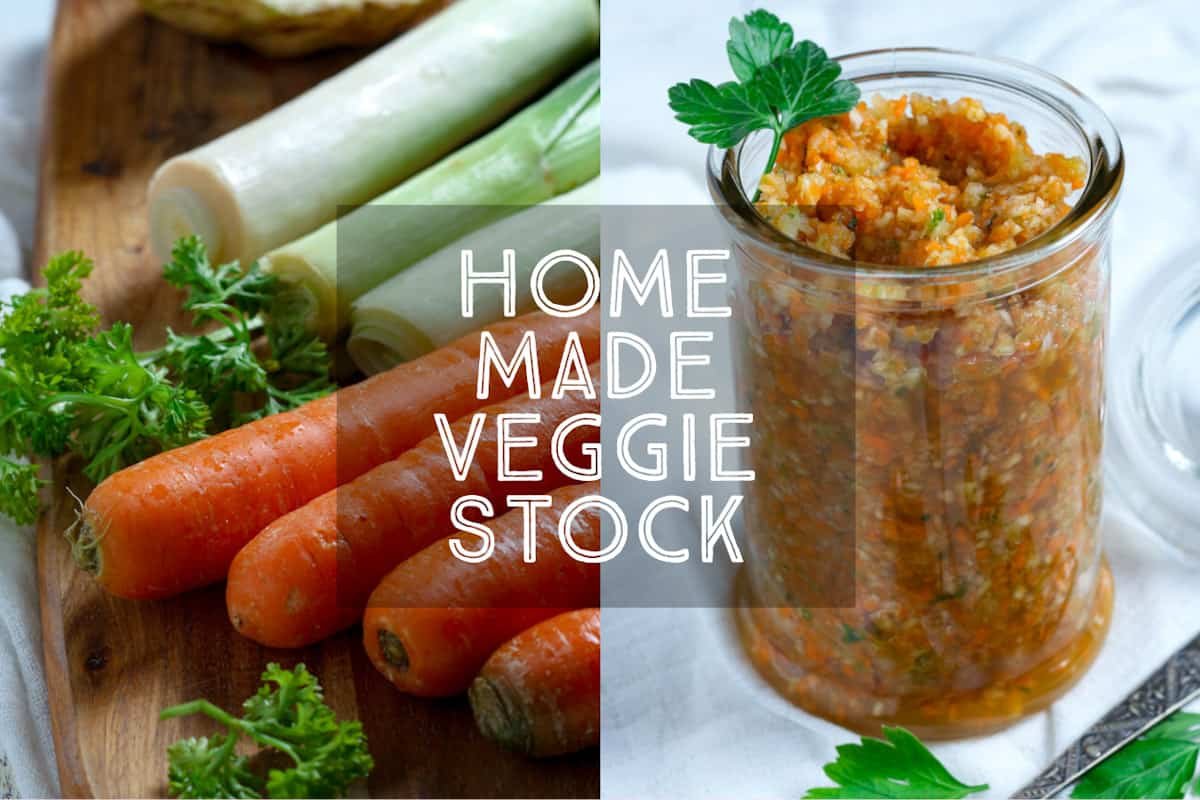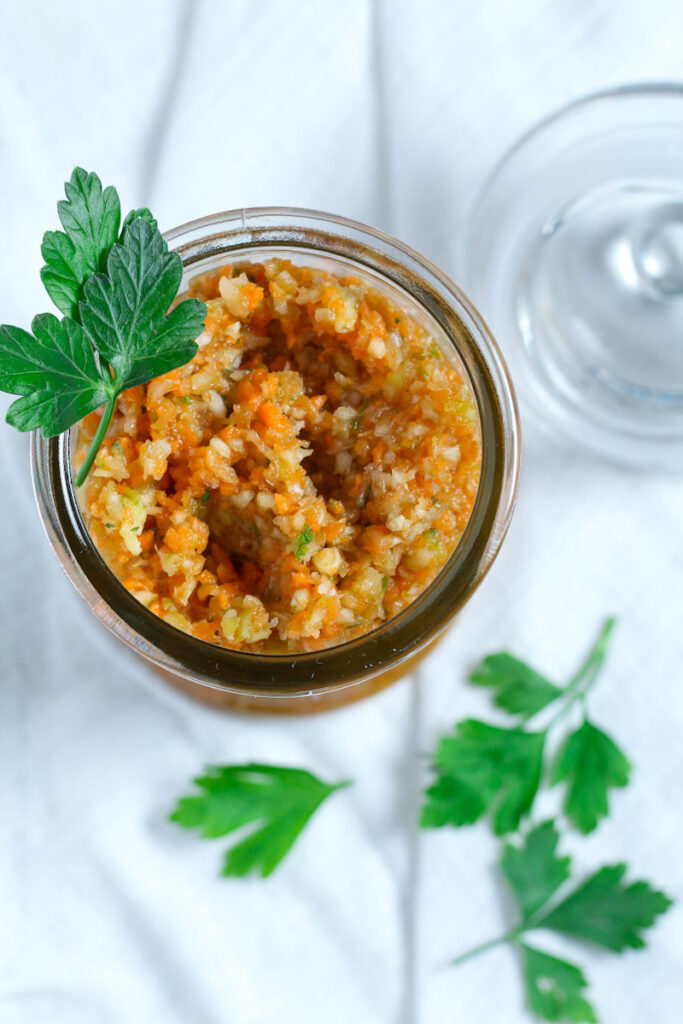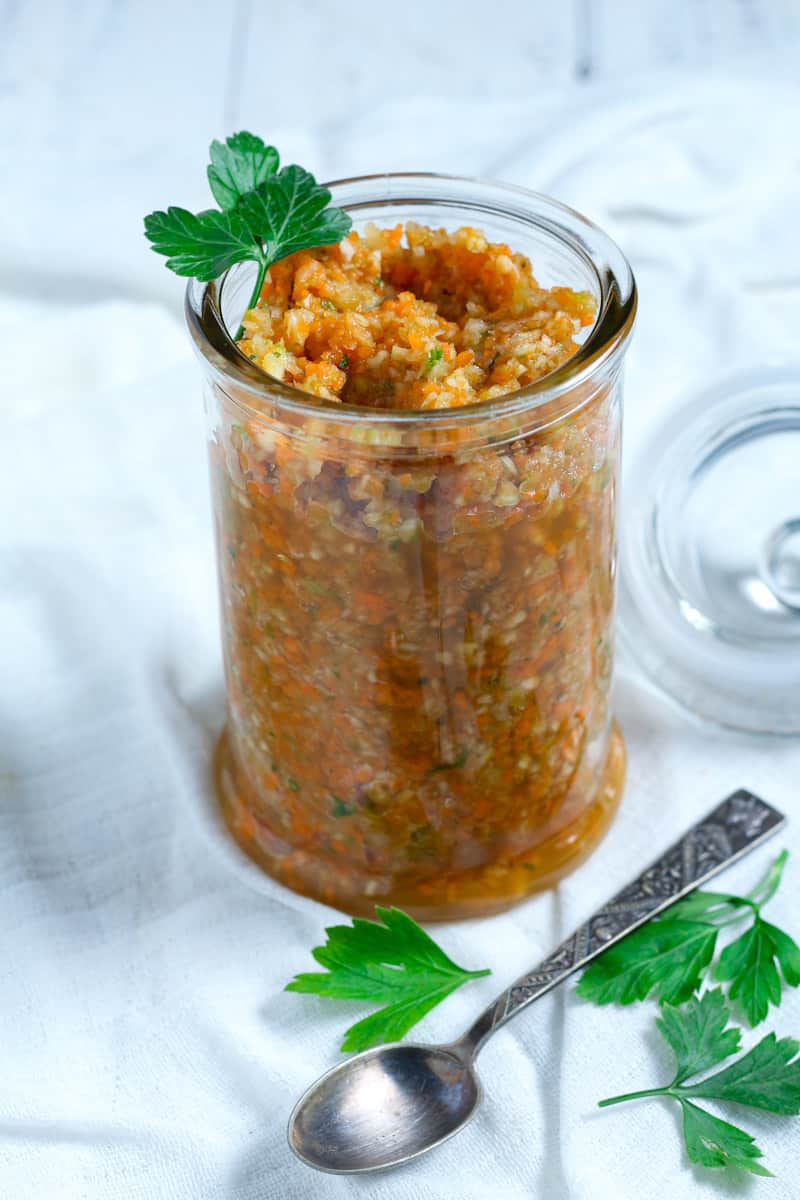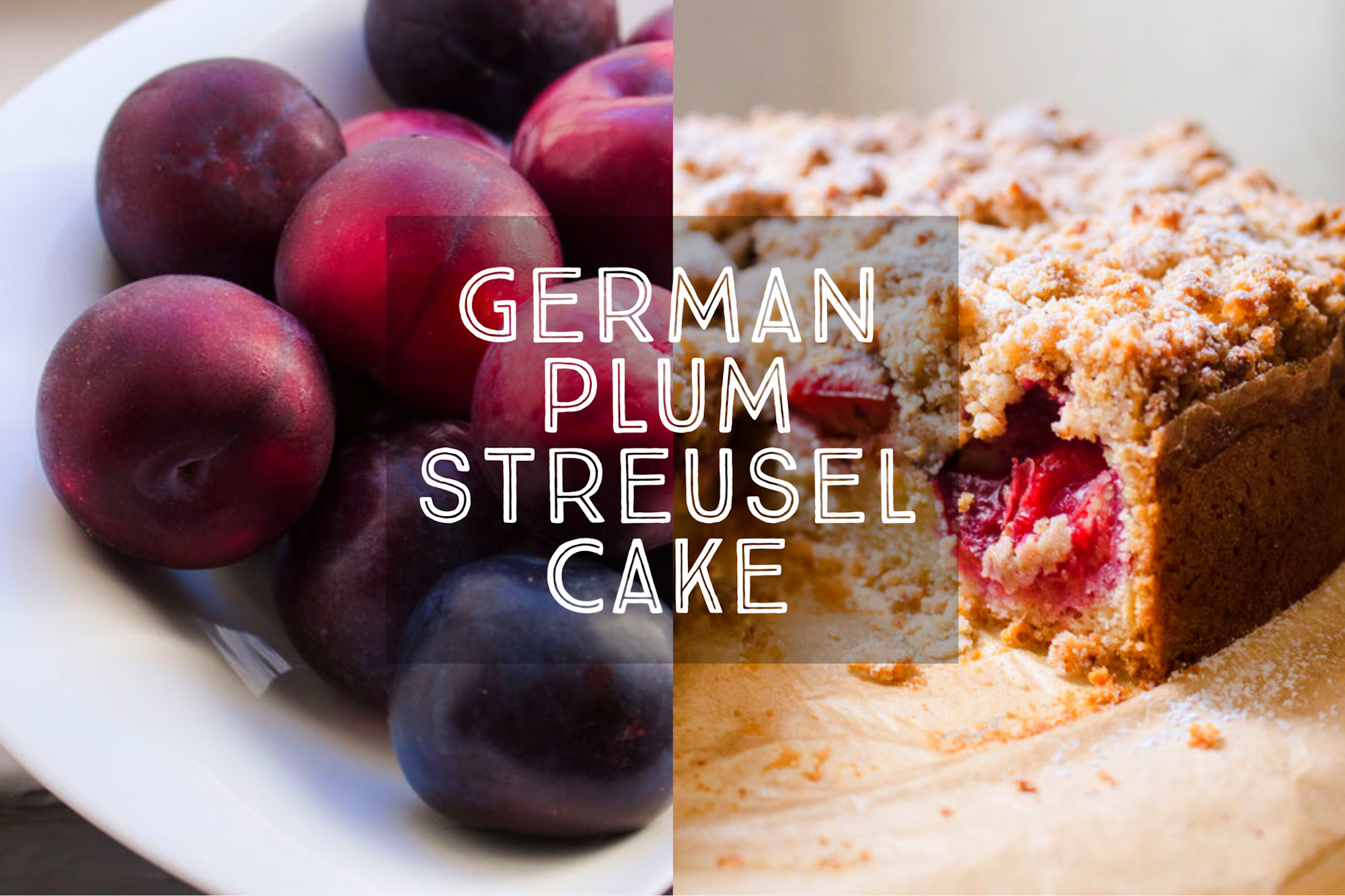
Homemade Vegetable Stock
Homemade Vegetable Stock Paste with all fresh ingredients is so easy to make at home, and perfect for soup season.

I can hardly believe I have never shared my recipe for Homemade Vegetable Stock! This is a wonderful recipe that I learnt from my German grandmother (Thanks Omi!) and is an absolute staple of the German kitchen.
Once you see just how quick and easy it is to make and how good it tastes, you’ll never bother with supermarket stock or bouillon cubes again.
TABLE OF CONTENTS
▼
About this recipe
Making vegetable stock paste at home is a simple matter of finely dicing some fresh vegetables and flavoursome aromatics, mixing with salt (a natural preservative) and then using it in any recipe that calls for veggie stock. That means it is perfect as the base for soups, stews, sauces and more.
Better Than Store-Bought
You know and control EXACTLY what goes into your homemade stock, so it’s a million times better than store bought! Looking at the packet of some veggie stock cubes you’ll likely find the usual suspects in these sort of things: Palm oil, maltodextrin, and plenty of sugar to name just a few.
In your homemade vegetable stock paste, there are only vegetables and salt. And guess what? It still packs a huge punch. Add some sun-dried tomatoes for a colour and flavour boost. Making a lot of Asian dishes? Add in some garlic and ginger or a little chilli (so good!). You have total flexibility.
How To Use Vegetable Stock Paste?
Just like you would use stock or bouillon powder! Stir around a tablespoon of your paste into 500ml of water, taste and add a little more if you like then use as the recipe calls. So easy!
I’ve given the ingredients here in the recipe for a very simple, base vegetable stock, but add in other vegetables of aromatics to suit your cooking needs. This is a great way to do a bit of a vegetable drawer cleanout. Got some saggy old herbs or soft carrots? In they go!
Recipe Ideas
This is the ideal stock to use in recipes like my Butternut Squash and Sage Risotto or Turkish Red Lentil Soup. It also makes a fantastic gift, so make up a few extra jars for Christmas gifts.
FREQUENTLY ASKED QUESTIONS
How long does Homemade Vegetable Stock Paste keep?
In the fridge, Homemade Vegetable Stock will last a year or more. It will be perfectly fine in a cool, dark cupboard as well – I find the colour fades a little over time but the salt preserves it and keeps it perfectly safe to eat.
Can I dry the paste to make stock powder?
Yes! Lots of people do this! I have a big fridge so I don’t mind having a couple of jars on the go. However, if you’d prefer to dry out the paste, spread it thinly over a piece of baking paper on a tray and dry in a very low oven (65°C / 150°F) for a few hours until the mixture has dried out and breaks apart easily. Whizz in the blender or food processor to fine crumbs and store in clean, dry jars.
Can I double the recipe to make extra stock?
Absolutely! Just keep to the ratio of salt to pureed vegetables.
Can I use iodised salt to make this stock?
I was taught that iodised salt can cause pickles and preserves to have colour or flavour problems, however, a report from the World Health Organisation from all the way back in 1996 suggests that it is absolutely fine.
Use this stock anywhere you would normally use cubes or powder: soups, stews or risottos are all delicious!
Homemade Vegetable Stock Recipe
Homemade Vegetable Stock
Homemade Vegetable Stock is so easy to make and something I always have in the fridge. No unnatural ingredients or weird preservatives, just veggies, herbs and salt for a clean vegetable flavour. This recipe was given to me by my German grandmother and it is perfect every time!
Ingredients
- 3 carrots
- 1 leek
- 1 bay leaf
- ¼ head of celeriac or: 2 large ribs celery, with their leaves
- small bunch parsley
- 75 g sea salt
optional:
- 1 parsnip
- handful sun-dried tomatoes
Instructions
- PREPARE: Wash and roughly chop all vegetables and herbs.
- PROCESS VEGETABLES: Dice very finely in a food processor with the blade attachment fitted, or by passing through a meat grinder.
- ADD SALT: Weigh the mixture and stir through 15-20g sea salt for every 100g vegetable puree (eg: 500g vegetables = 100g sea salt).
- TRANSFER TO JARS: Pack into sterilised glass jars, pressing down to remove any air bubbles. Store in the refrigerator for up to 1 year.
- USE: To use, dissolve approximately 1 Tbsp paste in 500ml / 2 cups of warm water, to taste.
Notes
- I use a meat grinder to chop up the vegetables, but you can just as easily use a food processor, or grate or chop the vegetables very finely.
- This is a base recipe, so you can add aromatics to suit your tastes!
- If you’d prefer to dry out the paste, spread it thinly over a piece of baking paper on a tray and dry in a very low oven (65°C / 150°F) for a few hours until the mixture has dried out and breaks apart easily. Whizz in the blender or food processor to fine crumbs and store in clean, dry jars.
Recommended Equipment
As an Amazon Associate and member of other affiliate programs, I earn from qualifying purchases.
Nutrition
Serving: 1Tbsp | Calories: 8kcal | Carbohydrates: 2g | Sodium: 733mg | Sugar: 1g
Tried this recipe?I’d love to hear how it went! Please leave a review or a star rating and let me know how it was! Use the hashtag #daysofjay on Instagram so I can see your delicious creations.

About the Author
Jay Wadams is a cookbook author, food photographer, and graduate of Le Cordon Bleu in Gastronomy and Nutrition.
Based in Italy 🇮🇹 Germany 🇩🇪 and Australia 🇦🇺.














Is there a traditional name for this?
Hi Kat, great question! This would be typically called “Selbstgemachte Gemüsebrühe” (literally: Homemade Vegetable Stock/broth) but in my family we often call it “Suppengrün” which is the German name for the mix of veggies in this recipe, leek, celeriac and carrots (as well as parsley and whatever else you decide to put in there 😀. J.